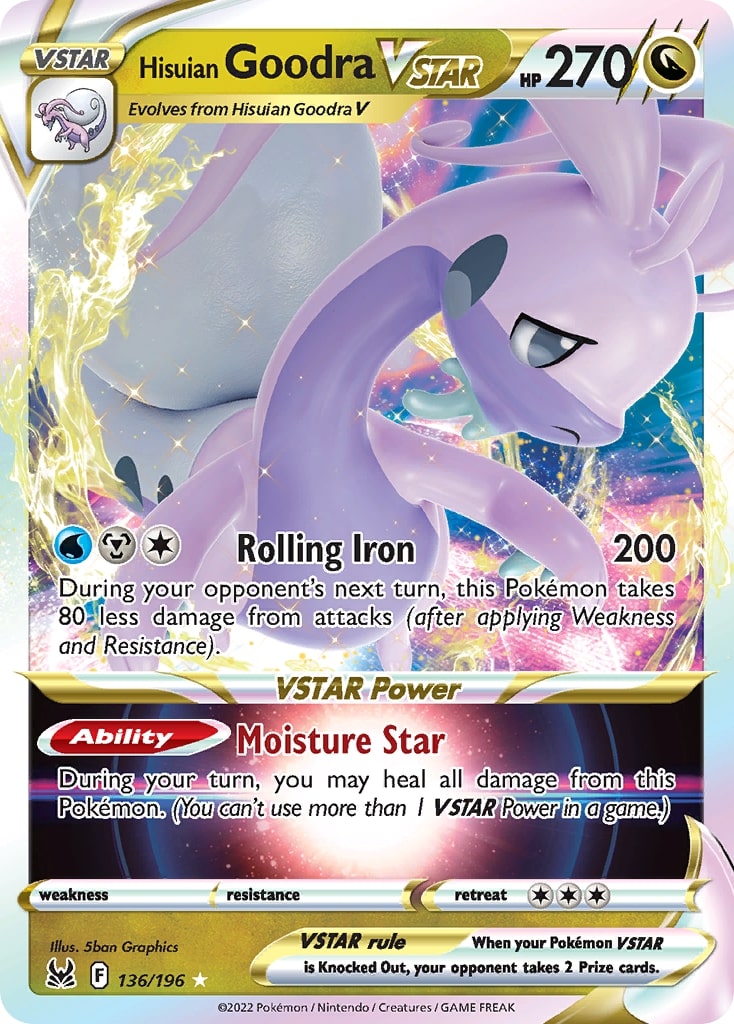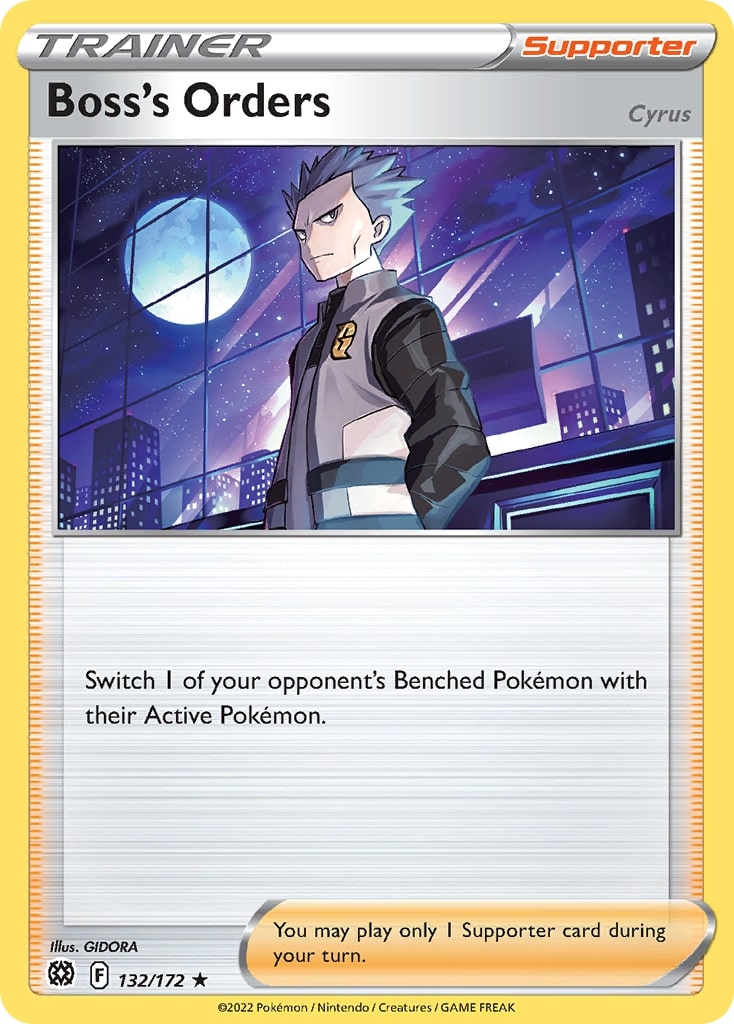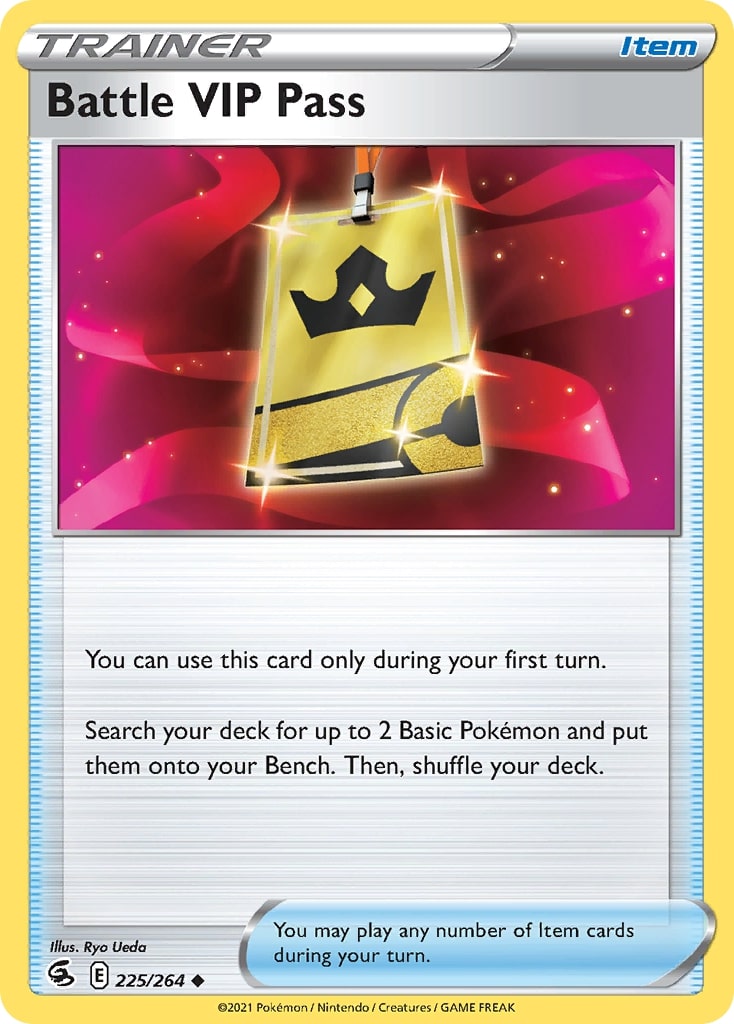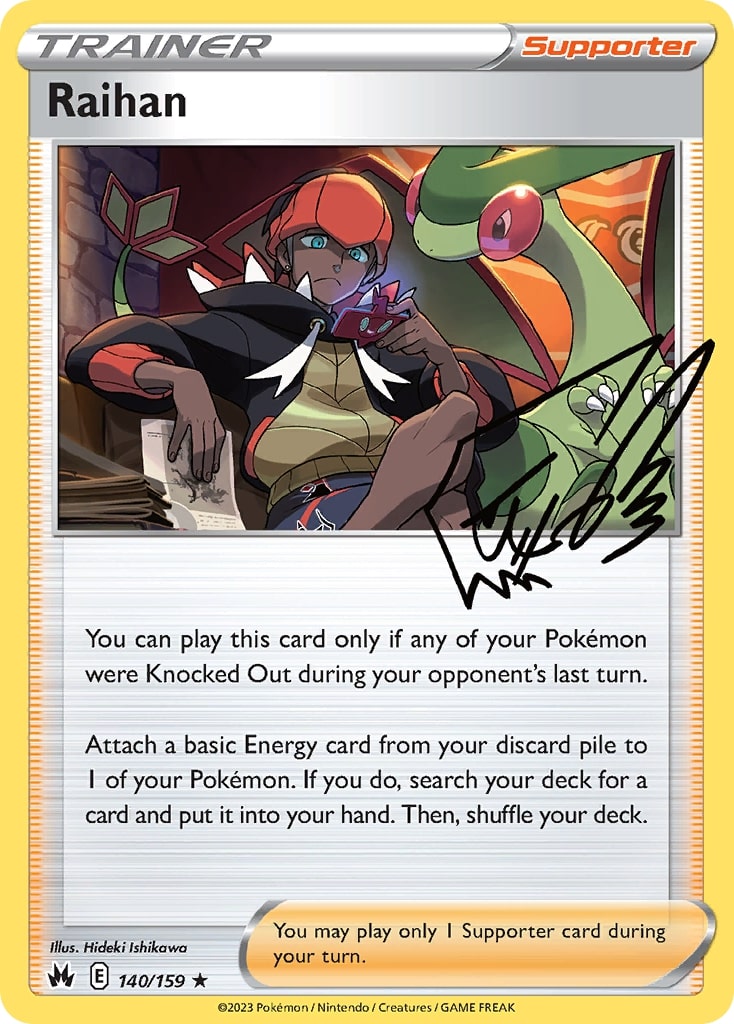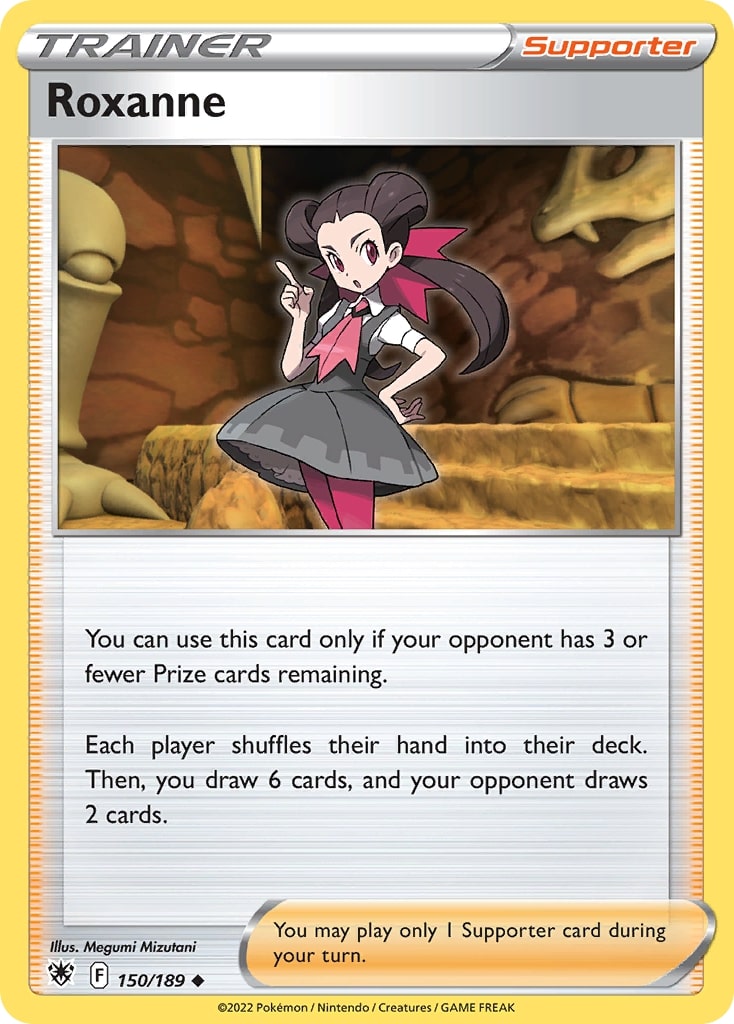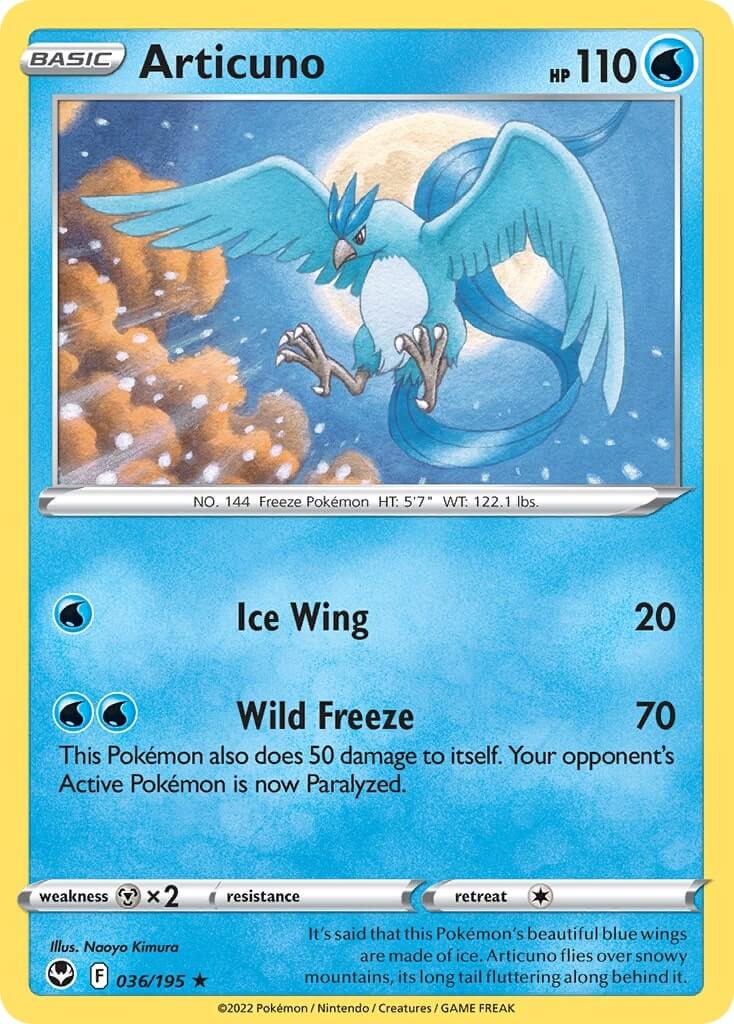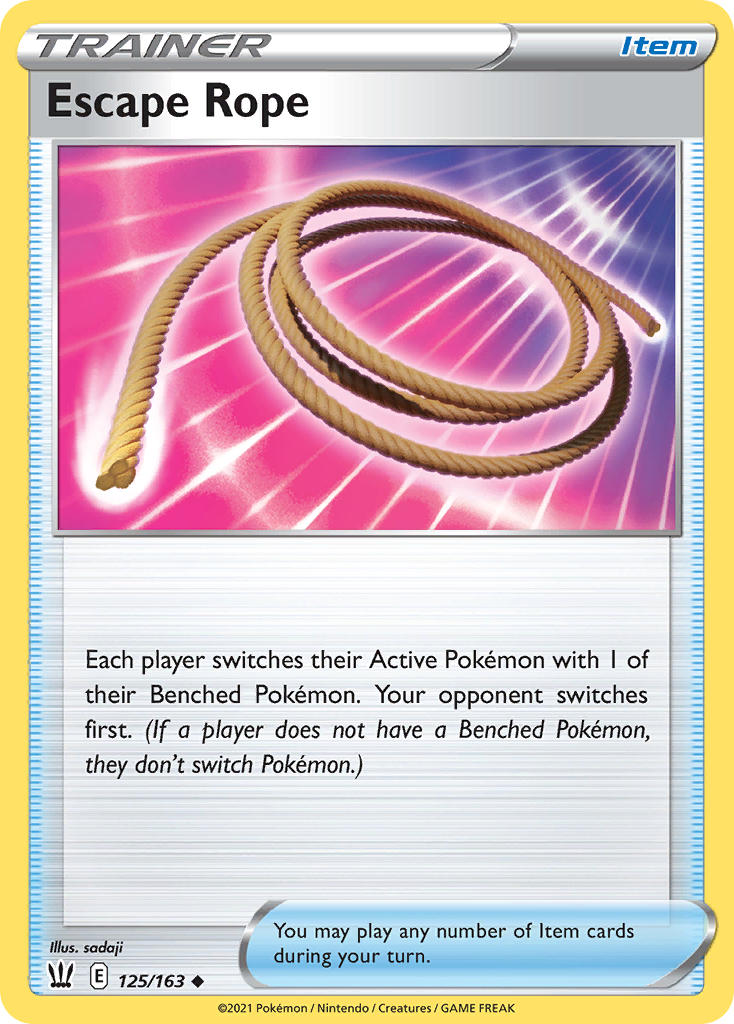Hello! I recently came back from the Utrecht SPE in the Netherlands, where I was able to finish 3rd out of more than 650 competitors, achieving my third top 8 of the season in seven events. I played Hisuian Goodra VSTAR once again; I’ve already written a lot about the deck after I got second place with it at the Liverpool Regionals [ https://www.tcgpark.com/the-unlikely-vstar-a-guide-to-lost-zone-goodra/], but the deck has changed in the meantime and adaptations were necessary for the deck to stay relevant. In this article, I will cover my deckbuilding process, then talk about my run in the tournament itself. I hope that my experience can be enlightening, especially for those among you who are new to the competitive scene!
I am not someone who sticks blindly to one deck. For example, over the course of the Brilliant Stars format, I played three different archetypes. Even after I won Lille Regionals with Inteleon / Galarian Moltres, I switched decks the very next week for Bremen Regionals in order to adapt to the metagame shift I expected. Basically, even if I do well with a deck, I recognize that it’s not necessarily the best play for the next event, and I’m willing to change what I’m playing.
While I got second place at Liverpool Regionals with Goodra in January, I knew that part of my success was due to my opponents not knowing much about the deck. In the weeks following Liverpool, thanks in part to my result, Goodra gained in popularity and players got used to playing against it. The matchup against Lugia VSTAR, which was already shaky to begin with, became very tough as players got used to powering up two Lugia VSTAR in this matchup.
For this reason, I knew that I might have to play something else than Goodra VSTAR. However, I couldn’t find anything that I felt confident with. Lugia was a strong deck, but I didn’t like the idea of being teched against by every other deck in the room, and the mirror match was also too luck-based for my comfort, especially since I would probably have to face it many times in any tournament.
I experimented with a lot of Lost Zone variants, trying to make good use of the new Sky Seal Stone and Zamazenta from Crown Zenith. I even tried a hybrid of Lost Zone Toolbox and Goodra VSTAR, using a small Goodra line to improve Lost Zone Toolbox’s matchup against Regigigas and the mirror match, but the deck was inconsistant and I discarded the idea.
In the end, I chose to stick with Goodra VSTAR for Bochum Regionals in February. I knew the deck and felt good playing it. I had first switched to a list using a mix of Battle VIP Pass and Quick Ball, and then to a build with only Battle VIP Pass and no Quick Ball, as recommended by my friend Antoine Boulay. Instead of playing Lumineon V, we used Pokégear 3.0 to search for our key Supporters without having to put a two-Prize Pokémon in play, and instead of Galarian Zigzagoon, we ran Choice Belt, notably that it was a key card in the mirror match. Without these two cards, Quick Ball didn’t have a lot of value, as we could usually search for Pokémon with Battle VIP Pass on the first turn, and with Capture Energy later on.
As for the Lugia matchup, I decided that, while unfavorable, it could be approached with a new game plan: using a Boss’s Orders to KO an Archeops, removing the threat of Yveltal.
This plan didn’t work. I did terribly in Bochum, finishing 5-4, including three losses to Lugia, all of them 2-0. Admittedly, I was a little unlucky, as two opponents topdecked a game-winning Boss’s Orders out of a dead hand one turn before I would have won the game, but still, the matchup was tough and my approach wasn’t working. One notable issue is that even with only one Archeops in play, Lugia players could still use Yveltal, it just took two turns instead of one to power it up. In order to deal with it, I needed to have two Boss’s Orders on consecutive turns, and that didn’t happen often.
All was not lost, though: my friend Alessandro Cremascoli made top 16 using almost the same deck, proving the deck was still viable as long as you had a bit of luck against Lugia. He had made some unusual cuts, including going down to three Mirage Gate and only one Ordinary Rod.
After the event, Alessandro told me that he felt Roxanne wasn’t very useful for him, but he really wanted to include Raihan in the deck. I tried something close to his list, with Raihan instead of Roxanne, and it worked well enough. With Raihan, Mirage Gate wasn’t as important, as it was possible to power up a Goodra without using Mirage Gate (and as long as you had seven cards in the Lost Zone already, you could also search for Mirage Gate with Raihan anyway). Raihan also brought Energy out of the discard, and since the second Ordinary Rod’s main purpose was usually just to get more Energy in the deck, only one Ordinary Rod made sense with Raihan.
There was still the Lugia issue, but with Raihan in the deck, there were some more options as to how to deal with it. One idea I had was using Yveltal CEL. I could use Boss’s Orders on an Archeops to remove the threat of a one-turn Yveltal SHF once again (and ideally KO the second Archeops afterwards) then use my Yveltal to discard the opponent’s Energy, preventing them from attacking. Raihan made using Yveltal a bit more likely. I didn’t manage to use this strategy often, though, and Yveltal was often a dead card. Again, having to target Archeops was tough because it meant ignoring the other threats that the opponent was presenting.
At some point, I thought back to an idea I’d seen in an online tournament. A Mexican player named Alberto Bonsanto had used Articuno SIT in a Goodra decklist. One of Lugia’s main weaknesses is its lack of switching cards, meaning that it has few ways to get out of Paralysis, if any. Goodra was already playing Water Energy; with Raihan in the deck, it was much easier to satisfy Articuno’s Energy cost. Articuno could be the answer I was searching for.
Practically, this is what Articuno does in the Lugia matchup: at some point during the game, when the opponent has a Lugia VSTAR in play, you can put Articuno in play and put Energy on it. You can then deal 70 damage and Paralyse the Lugia VSTAR. Since it can’t attack or retreat, the opponent will pass their turn. Repeat the attack, dealing 70 more damage. After that, Lugia VSTAR has 140 HP left and can be KO’d by Goodra VSTAR. (If you have Choice Belt, you only need to attack once with Articuno instead of twice.) In essence, Articuno is a 140 damage modifier.
Of course, some Lugia decklists do have answers to paralysis. The two most common ones are Bird Keeper and Escape Rope (in lists with Irida). If the opponent plays Bird Keeper, then they’ll have to KO Articuno with some other Pokémon. The two most dangerous attackers in this situation are Raikou and Stoutland V. However, usually Raikou has already been used (or discarded) by the time you use Articuno; as for Stoutland V, opponents usually don’t Bench it against Goodra, because of Bench space: they need two Lugia, two Archeops, and the last two spots are usually taken by cards such as Lumineon V, Oranguru, and Pumpkaboo.
Escape Rope is less annoying than Bird Keeper, since as long as there’s no Raikou or Stoutland V on the opponent’s board, you can simply sacrifice a Comfey and use Articuno again on another turn. The exception is if the opponent has both Escape Rope and Boss’s Orders, but that’s rare (they usually need Irida to search for Escape Rope).
There are two things that can increase Articuno’s effectiveness. First, if you have Temple of Sinnoh in play, that’s one more barrier in play for the opponent. Even if they have Raikou and Bird Keeper, for example, they need to find a way to remove Temple in order to actually take that double KO. Second, you can play Roxanne at the same time as you use Articuno, decreasing the odds that your opponent will find the cards they need to break the lock.
I played a few games with the deck at my local league. I was happy to discover that the tech actually worked: I won games that I would definitely have lost if I didn’t have Articuno. The Lugia matchup wasn’t an autowin, but Articuno demonstrably improved it. The last tweaks were fitting one Roxanne (that I’d previously cut from the deck) and add a fifth Water Energy to make it easier to use Articuno (and to attack with Radiant Greninja). The deck’s Energy management was sometimes shaky and I wanted to play that thirteenth Energy. Finally, I decided to cut the third Boss’s Orders for it.
There are two reasons why I particularly like Articuno as a tech. First, it can be used at any point in the game. You can attack with it on turn 2 if you need to, while setting up your other Pokémon, or in the late game alongside a Roxanne, or in the midgame, using its attack to buy time to draw your Roxanne. This means that you don’t have to change your gameplan drastically, and can still use your first few turns to play Colress’s Experiment, then use Raihan later in the game to power up Articuno.
Second, it didn’t require me to attack Archeops. Articuno was used to deal with the main threat of the Lugia deck: Lugia VSTAR itself. The game was still a Prize race, one I’d probably lose at first, but where Articuno allowed me to come back. (Yveltal was a threat of course, but it was actually acceptable that it would KO a Goodra VSTAR at some point, since you could just KO it back afterwards, and the rest of your Goodra would be tough to KO for the opponent).
Hisuian Goodra VSTAR deck
Finally, I ended up with the following decklist:
| Pokémon – 14 |
|---|
| 4 Comfey LOR 79 |
| 3 Hisuian Goodra V LOR 135 |
| 3 Hisuian Goodra VSTAR LOR 136 |
| 1 Cramorant LOR 50 |
| 1 Radiant Greninja ASR 46 |
| 1 Drapion V LOR 118 |
| 1 Articuno SIT 36 |
| Trainer Cards – 33 |
|---|
| 4 Colress’s Experiment LOR 155 |
| 2 Boss’s Orders BRS 132 |
| 2 Raihan CRZ 140 |
| 1 Roxanne ASR 150 |
| 4 Scoop Up Net RCL 165 |
| 4 Battle VIP Pass FST 225 |
| 3 Mirage Gate LOR 163 |
| 3 Switch CRZ 144 |
| 2 Pokégear 3.0 SSH 174 |
| 1 Ordinary Rod SSH 171 |
| 1 Choice Belt BRS 135 |
| 3 Temple of Sinnoh ASR 155 |
| 3 Escape Rope BST 125 |
| Energy – 13 |
|---|
| 5 Water Energy 3 |
| 4 Metal Energy 8 |
| 4 Capture Energy RCL 171 |
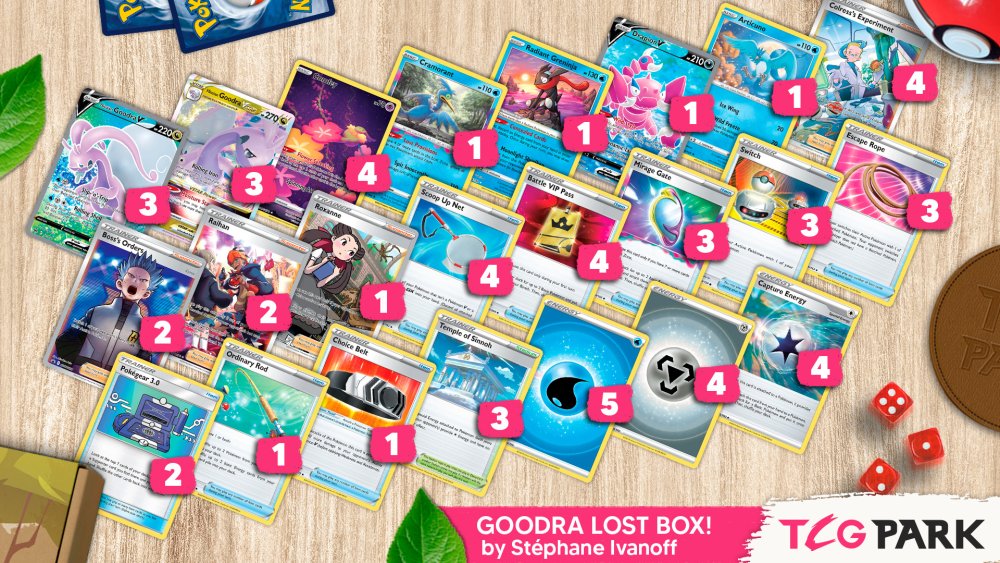
Tournament report
Arriving in Utrecht (which, by the way, is a beautiful city built around bicycles rather than cars, so it was really pleasant to visit, with much less noise and pollution than I’m used to), I felt something that is quite rare for me: complete confidence in my deck. It was an archetype I knew, that had good matchups against most of the metagame, and a surprise tech that people wouldn’t help and that could help me against the most important matchup I wanted to improve.
Here’s how my tournament ran!
I had to play my first round on stream for the third time this season. My opponent was playing some Lost Zone Toolbox variant, which is a good matchup for me. He also didn’t set up that well, and made some misplays, probably due to nerves. It was my opponent’s first time playing on stream. In addition, the stream judge told him twice that he was shuffling insufficiently and he ended up getting a warning for that. This is a fairly routine penalty, but I can imagine that having to play on stream for your first round and receiving a penalty, even if it’s just a warning, was probably stressful for him. In the end, my deck ran very well and I won two quick games, and I ended up not being completely sure what kind of variant my opponent was running.
In the second round, I was paired against Regigigas, which is a very favorable matchup for Goodra (I don’t have space to discuss this matchup in detail here, so check out my guide on Goodra to know more!), and I won 2-0 again.
On the third round, I was paired against Lugia for the first time, and it was time to see how well my Articuno tech would perform. However, my opponent essentially bricked twice, missing on a turn 1 Lugia, so I never even had to use Articuno. In game two, I was able to take four Prizes (on two Lumineon V) before my opponent could take a Prize, and I just had to KO his Lugia VSTAR to win.
In the fourth round, I was paired against Raphaël, a French player from Toulouse, a city with a very active league and many motivated players. Like several of his teammates, he was playing Vikavolt V, which is a good matchup for Goodra. What I didn’t know is that they were running Dragonite V in the deck, which made the matchup much scarier. Usually, Goodra VSTAR is fine tanking attacks from Vikavolt V all day; even if it takes time, once a Goodra is powered up, it won’t be KO’d. Dragonite V changes that, since it deals a lot more damage, especially if the opponent removes Rolling Iron’s effect with Escape Rope and/or Cross Switcher. Thankfully, it takes some time for the Vikavolt player to power up Dragonite V, and I had a good start, so even though Dragonite V ended up Knocking Out a Goodra VSTAR, I was able to finish off the first game by taking three Prizes in one turn with Radiant Greninja. In game two, I was lucky to topdeck an Energy when I needed it, allowing me to KO Dragonite V on the Bench with Boss’s Orders and the Choice Belt I had already attached. From then on, I was in the lead, and I made sure my opponent couldn’t come back, by Knocking Out his Galarian Zigzagoon, so he couldn’t reach the counts needed to take out my attackers.
Fifth round was Lugia again. I lost a quick game one where my opponent set up well and I didn’t, but was able to win game two. I didn’t end up using Articuno, although I don’t remember if it was because it was Prized, or I just didn’t find it (or the Energy acceleration I needed) until the end of the game, where I was already in the lead. However, my opponent told me after the game that he knew I was playing it, so he was more careful with this resources during that game. So, while I didn’t actually use Articuno, perhaps it was still useful in the end!
In game three, I had an excellent start, and I was able to KO my opponent’s only Lugia V thanks to a Choice Belted Goodra VSTAR before it could evolve. Time was running low, but my opponent (who ended up finishing 20th at the event) recognized that I had the game locked up and graciously conceded. I think it was possible to finish the game with the time we had left, but it would have been close, so I’m grateful to him for not trying to stall it out.
In round 6, I faced Steven Mao, a German player who I’ve faced a number of times since our first match in 2014. He played Arceus / Duraludon, which is generally a slightly favored matchup for Goodra, as long as you ignore Arceus and target Duraludon all the time. This is exactly the plan I used in the first game, which I won. In game two, I had a slow start and ended up conceding, but we had enough time to play game 3, which I won again. I don’t think anything unique happened in this games, except that I was able to buy time at least once with a Boss’s Orders on a Duraludon VMAX with no Energy.
I was now 6-0 and feeling very good, but of course, that’s where things become even more difficult. In rounds 7 and 8, I played against two of Europe’s best players, Robin Schulz and Owyn Kamerman, both running Mew VMAX. To be honest, I don’t remember much about these games, which is a shame because Mew is not an easy matchup, so I assume that luck played a role. I ended up with a draw vs Robin and a win vs Owyn, advancing to 7-0-1.
Finally, in the last round of the day, I played against Karl Peters, another player who I’ve seen in tournaments for years and years. He was running a very interesting Inteleon / Frosmoth deck, which I knew he had already used to make day 2 at OCIC and Bochum. This is an archetype that I’d briefly considered, so I had looked in his list at some point, but I didn’t remember exactly what it included.
I got a painful reminder of one of his deck’s specificities early in the game. I won the coin flip and chose, out of habit, to go first, which is actually likely a mistake in this matchup. He set up on his first turn and used Keep Calling, ending his turn with four Sobble and a Manaphy in play. I used Cramorant to take a KO on his Active Sobble, which was my second mistake: with Drizzile and Raihan, he powered up an Inteleon SSH, put Lost City in play, and KO’d my Cramorant, sending it to the Lost Zone. Then came Miltank. With no Cramorant, most Goodra decklists would have only one way to deal with it, by hitting it twice with Moonlight Shuriken, and with Emergency Jelly or Scoop Up Net, he would have easily tanked the attacks.
However, I had another attacker that could hit Miltank: Articuno! First, of course, I tried taking Prizes elsewhere with Goodra, but Karl ended up using Scoop Up Net on most of his board, leaving me with a Miltank I had to KO. In the end, things were extremely close, and I was sure Karl would end up decking me out since I was out of resources… but I had barely enough to take my sixth Prize on Miltank in two attacks.
Game two went much smoother. Now that I understood his win condition, I could play around it. Instead of using Cramorant at the first opportunity, I took one more turn to set up, and attacked with Goodra VSTAR. Through a series of Boss’s Orders and Escape Rope, I was able to remove most of Karl’s board. Then, when he had no way to answer the KO, I used Cramorant to KO the Miltank, and he conceded soon after.
With that victory, I finished day 1 at 8-0-1, just like in Bilbao and Liverpool this season (both times, I ended up making it to the finals). This was an excellent position to be in, and the field seemed fine for Goodra, so I felt confident that I could make top 8, although there were several Mew players not far from the top tables.
I had to face one such player in round 10: Portuguese player Paulo Mimoso, who was running a Fusion Strike Energy variant of Mew VMAX. In theory, this matchup is much better than the Double Turbo Energy variant, as I can KO Meloetta with Cramorant, then deal with Mew VMAX with Drapion V and take my last two Prizes on a Genesect V. However, things didn’t go in my favor. I had a suboptimal start (a theme of day 2 is that Comfey tended to hide from my opening hand), and wasn’t able to make a comeback. Things went better in game two, but this left us with no time to play game three, so this round was a tie.
In round 11, I played against fellow Goodra player Vinnie Schelfhaut, who had also made top 8 in Liverpool. The Goodra mirror match is a strange one. After Rolling Iron, Goodra hits an opposing Goodra for 120 damage, short of a 2HKO. However, Choice Belt, or using Escape Rope and Boss’s Orders to remove Rolling Iron’s effect, makes it a 2HKO. Your best bet is to try attacking the opponent’s Goodra first, forcing them to be the first one to use their VSTAR. The other key to the matchup is limiting your Bench so your opponent can’t take six Prizes on them, and force them to go through Goodra.
The player that goes first has an advantage because they can play Temple of Sinnoh at the end of their turn, which shuts down Capture Energy for the rest of the game and makes it harder for the other player. Thanks to these key ideas, I was able to win the round. However, I then lost another Goodra mirror match in round 12 (my first loss of the tournament), basically for the same reasons.
I was now at 9-1-2 and only needed one more win to advance to top 8. Thankfully, I then hit an excellent matchup in Regigigas. I was actually scared at first because my hand was terrible, but my opponent was quickly forced to play Marnie, and I got a playable hand that allowed me to eventually win the first game, though I was running low on resources towards the end. Game two went much smoother, and I reached the important threshold of 32 points. Then, I ID’d round 14 to get the even safer amount of 33 points, and advanced to top 8 as the fourth seed.
My top 8 match was against Oliver Barnett, playing Mew, and it happened on stream. After the finals of Bilbao and Liverpool, I was afraid that my run would be ended on stream by a Mew VMAX deck for the third time. The first game didn’t go my way, as I couldn’t draw a lot of cards in the early game before being forced to use Drapion V. This means that after I got hit by Roxanne, I still had a lot of dead draws, and I lost the game.
In game two, my heart sank when I saw that my Drapion V was Prized. However (and this might be the main piece of advice, or at least the most universal one), it’s important not to despair even in bad situations: I believe something that separates great players from good players is the willingness to keep playing even if things look lost, to cling on to hope rather than take the easier route of mentally accepting defeat. There are plenty of games that I won despite being in a very tough situation, so I resolved to do my best to win until the very end.
As it turns out, from what I was told after the game, Oliver also had Prize issues, with two Mew VMAX in the Prizes. Because of that (and the fact that, obviously, he didn’t know my Drapion was Prized), he had to protect his one Mew VMAX at all costs. He emptied his whole hand and played Path to the Peak as he took his first KO. However, this meant he could no longer draw, and he ended up bricking. I was able to set up my Goodra VSTAR and take multiple Prizes with it. Knowing he was too far to come back, he conceded.
In game 3, my Drapion V was probably sorry to have been Prized all game long, and tried to make it up to me. However, it overcompensated and ended up being the only Basic Pokémon in my opening hand, which is perhaps even worse, as it could be KO’d (with Lost City ensuring it wouldn’t come back) before I could make good use of it.
Once again, I was saved from my bad luck by my opponent’s own bad luck. Oliver’s hand was pretty dead, and he finished his turn with only a Genesect V and a Mew V in play. On my turn, I managed to set up properly, and even hit Genesect with Cramorant. Then Oliver played Marnie, but his board was still pretty weak, only adding Oricorio to it. I was able to find a Boss’s Orders to KO his only Mew in play with Drapion, and he scooped.
My top 4 match was a rematch against Vinnie, my round 11 opponent. However, this time things didn’t go my way in the Goodra mirror match. In the first game, I realized in the middle of the game that two of my three Goodra V were Prized. Even though Vinnie and I both had only one Goodra VSTAR in play, he was able to make the first attack, so my Goodra would be KO’d before his, and at that point, with how many resources had passed, there was no way I could assemble every card I needed to get the revenge KO (I would need Ordinary Rod for Goodra V, drawing it with Concealed Cards, Mirage Gate to attach Energy to it, Escape Rope and Boss’s Orders to KO his Goodra VSTAR that had 120 HP left), so I conceded the game. In game two, despite starting Comfey, Vinnie was unable to find other Basic Pokémon, so I won.
In game three, unfortunately, I was unable to draw a Colress’s Experiment all game long, and since Vinnnie KO’d my two Comfey with Moonlight Shuriken early on, I was stuck with two cards in the Lost Zone for pretty much the whole game. I still managed to fight back by powering up Goodra with Raihan, despite terrible draws, but I had too many dead turns and was far behind in the Prize trade. I tried mounting a comeback with Roxanne and even using Articuno to hit his Goodra two turns in a row and put it in range of Rolling Iron, but Vinnie had an Escape Rope in hand, so the Paralysis didn’t stick and I lost.
I was heartbroken to have made it this far, only to lose once again so close to the finish line. However, looking back on it, I’m very proud to have had such a great run, and to be back at fourth place in the European rankings.
And now?
My American readers may be wondering if Goodra VSTAR could be a good play for the remaining Regionals of this format. To be honest, I think Goodra is a solid deck in general, and Articuno definitely gives it an interesting out against Lugia, although the effect of surprise is now lost.
I don’t think there are any changes to make to the deck. One Ordinary Rod and three Mirage Gate were enough, and the Pokégear performed very well.
One tech that could be considered is Sky Seal Stone, for the Mew matchup. You rarely use Goodra’s VSTAR Power in this matchup, and Sky Seal Stone could be used on Drapion V in order to take four Prizes, so you’d only need to take two more Prizes elsewhere. Having two Raihan in the deck makes Sky Seal Stone much easier to find (although you also need to find Drapion V and Temple of Sinnoh while the Mew hits with Judge or Marnie, so it’s not that easy).
I’ve noticed that recently, Lost Zone Toolbox has become less popular, both in general and at higher levels of play. It seems that the deck struggles a bit too much against the rest of the metagame, since Lugia, Regigigas and Goodra are all unfavorable matchups. With that in mind, now could be the time to play decks that are solid against the field but have trouble against Lost Box.
I think some kind of deck with Articuno and Inteleon, whether it’s classic Palkia VSTAR or some weirder deck like Karl Peters’ Inteleon Toolbox, is a good choice: Articuno handles the Lugia matchup and Eiscue beats most current Regigigas decklists (and some Lost Box as well, though you should expect players to have an answer to it).
As for me, Utrecht was my last event pre-rotation, so I’m now fully committed to playtesting the post-rotation metagame. I hope to let you know what I think about it in the days to come!
Thanks for reading,
Stéphane
